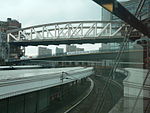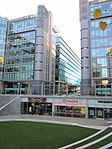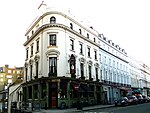Westbourne Terrace
PaddingtonPages containing links to subscription-only contentStreets in the City of WestminsterWestbourne, London

Westbourne Terrace is a street in the Paddington district of the City of Westminster in west London. The street runs between Westbourne Bridge in the north and the junction of Westbourne Crescent and Sussex Gardens in the south and was developed between 1839 and the late 1850s. It has been described as the "most spacious and dignified avenue" in Bayswater and "unrivalled in its class in London or even Great Britain". The street is not to be confused with Westbourne Terrace Road which runs north from Westbourne Bridge into Little Venice, and a large number of other Westbourne streets in the area.
Excerpt from the Wikipedia article Westbourne Terrace (License: CC BY-SA 3.0, Authors, Images).Westbourne Terrace
Westbourne Terrace, London Paddington
Geographical coordinates (GPS) Address Nearby Places Show on map
Geographical coordinates (GPS)
| Latitude | Longitude |
|---|---|
| N 51.5159 ° | E -0.1797 ° |
Address
Westbourne Terrace 74
W2 6QS London, Paddington
England, United Kingdom
Open on Google Maps










